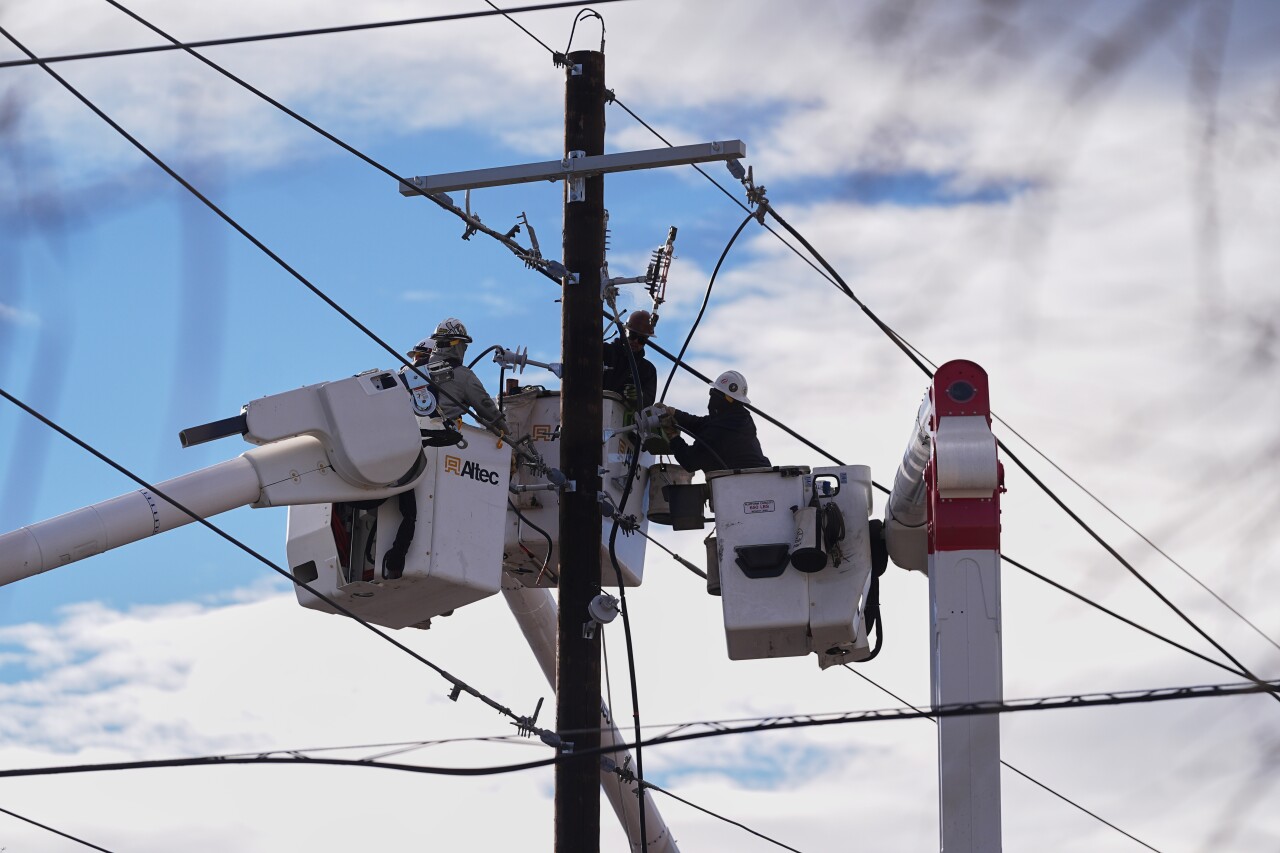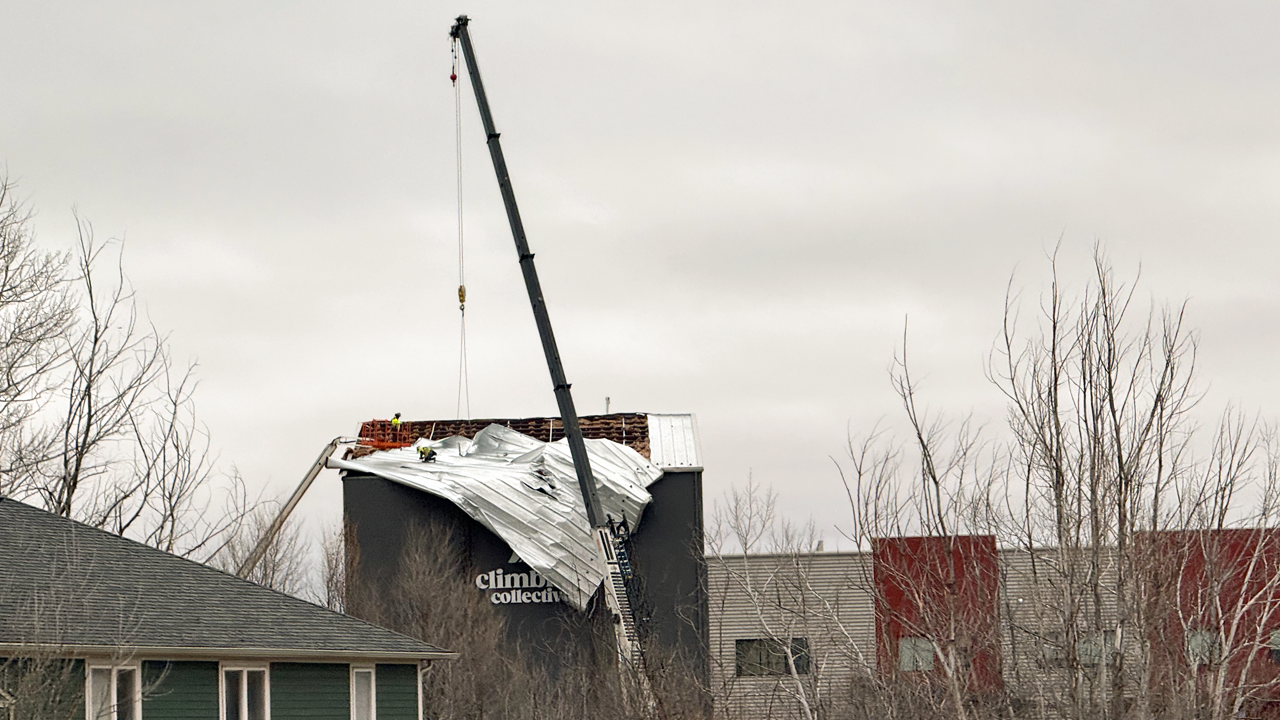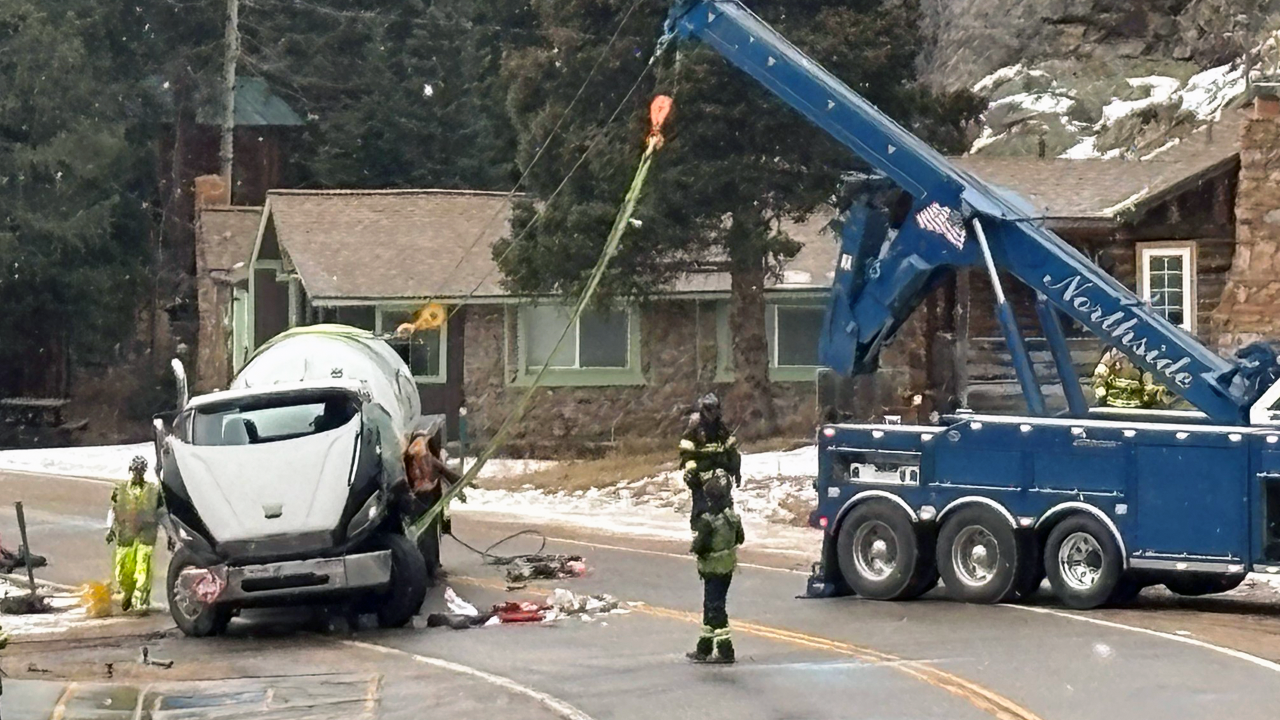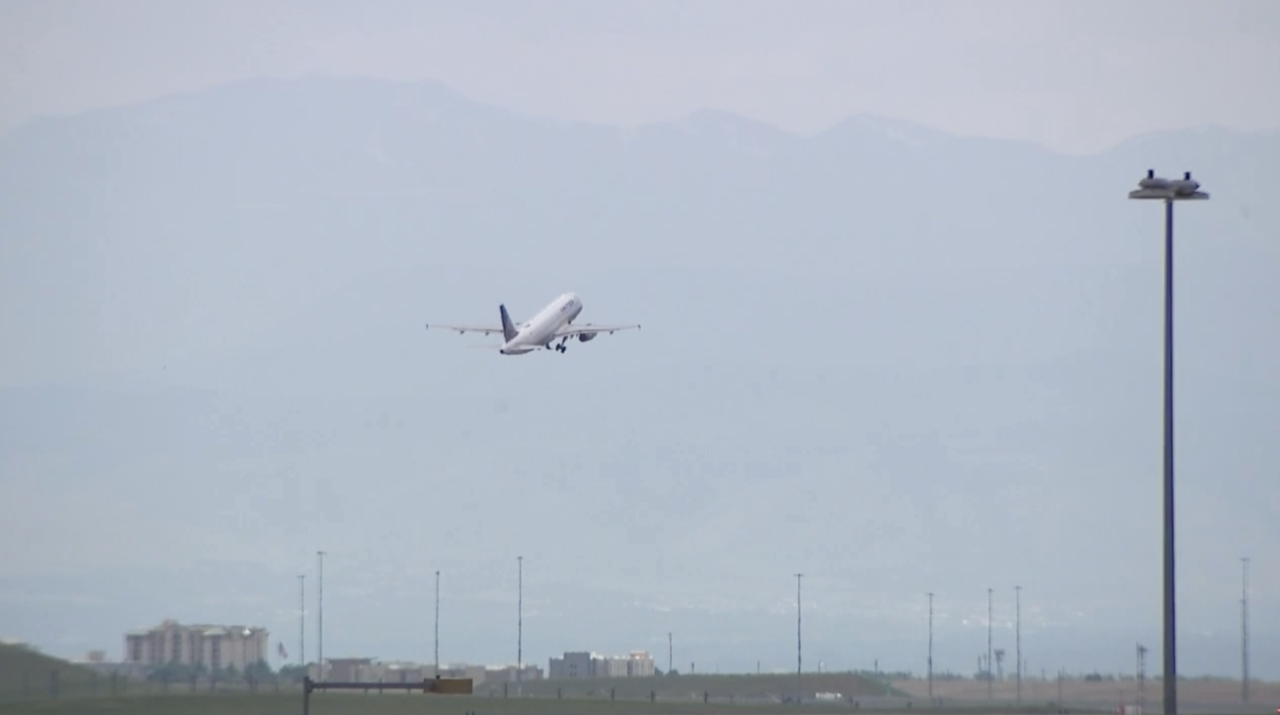Colorado
What’s Working: Colorado builders stick with rate incentives to attract new-home buyers

Traffic picked up this year at the Oakwood Homes sales office for Banning Lewis Ranch, where new homes in the northern Colorado Springs neighborhood start in the mid-$300,000s.
But business is nowhere near pre-pandemic levels or even during the pandemic, when home buying was in a frenzy, Lauren Hanshaw, a new-home counselor at the office, said on a quiet weekend morning last month. She’s comparing it with 2023, which she called “my worst year in 10 years.”
“Traffic is a little bit more pointed. You don’t have as many lookie-loos versus people who are in need of a home,” Hanshaw said. “This year, we’re seeing a little bit more of a calmness because people understand that there’s still a demand, a need for homes and that rates are cyclical. They’ll be able to change that status in a couple years if they refinance their home.”
Since mortgage rates have barely budged even with two interest rate cuts by the Federal Reserve since September, Hanshaw’s belief is that shoppers are more educated. They know they won’t walk out the door with a monthly payment of under $1,800 or $2,000 — a very doable feat when rates were below 4% and even 5% at the Banning Lewis Ranch price point. On Thursday, the average mortgage rate for a traditional, fixed-rate 30-year loan was 6.98%, according to Mortgage News Daily, up from 6.62% a month ago and down from 7.41% a year ago.
But builders like Oakwood are doing what they can to get potential buyers in the door with rate-reduction incentives. Nearby Richmond American Homes is touting 3.999% rates (which increases to 5.999% in year three). Baessler Homes, which builds in northern Colorado, has a deal to get payments to “as low as $1,977” in the first year, and is essentially offering up to $20,000 in concessions (housing payments increase after year one to $2,578 in year four, or a 5.99% rate).
Meanwhile Oakwood, which started the year with some 4.99% offers, now has a 2.99% offer on select houses in Colorado Springs and a 3.99% promo in Denver. The builder is also working with the Colorado Housing and Finance Authority to provide down-payment assistance of up to $25,000, plus below-market rate loans. Most of the incentives, though, are only available to certain buyers and for certain houses.

It’s been working, especially after the pullback in 2023, said Michael Fraley, Oakwood Homes’ chief growth officer.
“When we rolled into 2024, we really started to do what we call builder forwards that were allowing us to get the rates down,” Fraley said. “As we started to introduce these rates, the 4.99%, and in some instances we got down to 4.25%, that’s when we saw many customers. In fact, our number one selling collection is the Ascent Collection in Colorado Springs. We sell about eight of those a month and that’s been consistent.”
The lowest priced two-bedroom, two-bath homes in the Ascent Collection are duplexes — 1,264 square feet and starting at $334,990. That’s less than El Paso County’s median sales price of $370,000 for a townhouse or condo in September.
Oakwood could probably sell more but is only building eight a month in that community, Fraley said. However, he added, “Had we not been able to find a way to get those below-market rates, I don’t think they would be selling as well.”
Concessions aren’t limited to new-home builders. Sellers and buyers often negotiate on the list price. According to the Colorado Association of Realtors data, sellers were getting very close to what their asking price in September — or 98.6% of what they asked for. That compares to June 2021, when bidding wars were common and sellers received 104.4% of their list price.

Of course, now, it’s a different market. According to the Denver Metro Association of Realtors, seller concessions were up in June to 48% of sales, compared to 29.2 percent a year earlier. The average concession was $7,295.
It’s all cyclical, said Hanshaw, who began working in the real estate industry in 2014 as the economy was recovering from the Great Recession.
“When I started in the industry, it was like you could ask for the world — a free basement, free backyard landscaping, free fencing and builders would entertain it to obtain a sale. Then it became a market of, I’m not giving you a refrigerator because the next person that walks in the door will take the deal without a refrigerator,” she said. “Now, I’d say, we’re back into negotiating a little bit heavier to obtain the sale.”
➔ 58% of Denver metro rentals offering an incentives. Free parking, free rent and other concessions for renters are on the rise, according to data from real estate site Zillow. In the Denver metro area, 58% of rental listings in October offered some sort of concession, up from 43.4% last year.
Nationwide, concessions were at a record high with 37.7% of all listings offering some sort of perk, compared with 30% a year earlier. That means landlords are competing for renters, especially after September saw a 50-year high in completed construction projects aimed at renters. Denver metro saw the third-highest jump in share of listings with a concession. >> Details
Sun economy stories you may have missed

➔ How to reduce trash — in outer space? A Colorado company is working on its own WALL-E-like trash compactor for future space habitats. >> Read story
➔ Clean-car sales jump 10% as Coloradans lean on state, federal and utility rebates. EVs, plug-in hybrids, and hybrids made up 38% of vehicle registrations in third quarter of 2024 >> Read story
➔ Denver Health was losing almost 90% of its nitrous oxide to leaks. So it cut the gas. The hospital is switching from centrally piped nitrous oxide — also known as laughing gas — to portable tanks to reduce greenhouse gas emissions >> Read story
➔ Health care prices for Colorado public sector retirees see huge increase for 2025. Two Medicare Advantage plans offered by Colorado PERA are seeing big jumps — 130% for one and more than 200% for the other >> Read story
Election 2024 stories:
➔ View all of our Election 2024 coverage
Take the poll: Insurance woes

If you missed the reader poll last week, there’s still time! The spike in homeowners insurance costs may have wiped out any savings of a low-interest mortgage. Feeling it? Take the reader poll to help us better understand what’s going on in Colorado ➔ cosun.co/WWinsurance
Other working bits

➔ 185 applications for Colorado’s broadband program. And they’re asking for $1.78 billion, which is more than double what the state received in funding for the Broadband Equity, Access and Deployment program. U.S. lawmakers approved the federal program after realizing in the pandemic that some places in America have mediocre or nonexistent internet service.
Colorado received $826.5 million in BEAD funding and opened its program to applicants earlier this year. If all projects were approved, that would help 111,896 homes, schools, businesses and community organizations, according to the Colorado Broadband Office, which is overseeing the grants. More than half of those locations — approximately 67,559 — are considered unserved with no broadband internet service. The Broadband Office plans to review every application in the coming weeks, which will take up to 160 days. >> Details
➔ Send a question to the EEOC. Any question is allowed, according to the U.S. Equal Employment Opportunity Commission, which is hosting the annual end-of-the year webinar Nov. 12 at noon. Will the questions be answered? That’s unknown. But questions need to be asked during pre-registration for the 90-minute session. >> Register
Got some economic news or business bits Coloradans should know? Tell us: cosun.co/heyww
Thanks for sticking with me for this week’s report. Remember to check out The Sun’s daily coverage online. As always, share your 2 cents on how the economy is keeping you down or helping you up at cosun.co/heyww. ~ tamara
Miss a column? Catch up:
What’s Working is a Colorado Sun column about surviving in today’s economy. Email tamara@coloradosun.com with stories, tips or questions. Read the archive, ask a question at cosun.co/heyww and don’t miss the next one by signing up at coloradosun.com/getww.
Support this free newsletter and become a Colorado Sun member: coloradosun.com/join
Corrections & Clarifications
Notice something wrong? The Colorado Sun has an ethical responsibility to fix all factual errors. Request a correction by emailing corrections@coloradosun.com.

Colorado
Windstorm batters Colo., leave tens of thousands without power; restoration expected by Saturday night

BOULDER COUNTY, Colo. — Colorado’s foothills were hit by hurricane-force winds Friday morning, with gusts reaching 112 mph in Boulder County. The storm caused damage, outages, fires, and travel disruptions, but no injuries were reported.
Earlier in the week, on Wednesday afternoon and evening, a previous windstorm brought gusts up to 109 mph, knocking down trees and power lines and sparking fires near Yuma.
No serious injuries were reported from the fires near Yuma. Authorities believe no homes were lost. All fires were contained by Thursday night after burning just over 14,000 acres.
Power outages
Xcel Energy carried out another public safety power shutoff (PSPS) on Friday in response to hurricane-strength winds in the Front Range foothills, as crews worked around the clock to restore power to thousands of customers after initiating a Wednesday PSPS.
Xcel said PSPS conditions subsided as of 5 a.m. Saturday. However, about 57,207 Xcel customers were still without power.
Xcel Energy
The utility company said it’s aiming to restore power to customers by 10 p.m. Saturday, but warned that the outage could extend into Sunday for some customers.
“The safety of crew members is paramount as they work to restore power. Xcel Energy asks customers to help keep crew members safe as they work diligently to restore power as quickly as possible,” wrote Xcel Energy in a release.
Xcel said it has identified 396 customers who have been without power since the initial outage on Wednesday. The company said these customers are being prioritized as restoration efforts continue followed by other high-needs areas.
David Zalubowski/AP

Xcel set up resource centers and charging stations in Evergreen, Gilpin County, Lakewood, and Idaho Springs.
On Saturday, Gov. Jared Polis urged residents to avoid directing their frustration at Xcel’s frontline crews over ongoing outages, saying workers are working long hours to restore service.
“As many Coloradans await the return of power to their homes and communities, I want to urge everyone not to take their frustrations with power being out on the hardworking men and women who make up the Xcel crews. The company and its crews are working around the clock to ensure our safety and to restore power. While I have expressed great frustration with Xcel and there’s much room for improvement in communications about what’s going on and timelines, I am grateful for Xcel’s frontline workers and all those people working to restore people’s power. Please thank them if you see them,” Polis said in a statement.
CORE Electric Cooperative, which provides power to parts of Clear Creek, Jefferson, and Park counties, said that 9,281 customers lost power during Friday’s storm.
CORE said the return of service for most members will likely not occur until later in the day on Saturday, as more favorable weather will help with restoration efforts. However, strong winds are still expected, and many trees have been weakened during the storm.
Damage and closures
Reports of downed trees, power lines, and street poles in and around Boulder and across the foothills during Friday’s wind event flooded emergency dispatch.
In Longmont, Friday’s windstorm severely damaged the roof of Longmont Climbing Collective, 155 Pinnacle Street, prompting the closure of the business as crews work to replace the roof.

Denver7
Longmont Climbing Collective said in a Facebook post that it hopes to reopen Sunday or Monday, but it may take longer. No injuries were reported.
Downed trees and street poles blocked roads and trails across Boulder County, causing major closures, including portions of CO 72, CO 93, US 36, and CO 128. But some reopened by nightfall.
Denver7

In the Allenspark area of Boulder County, a propane tanker on CO 7 rolled over after hitting black ice on Friday, trapping the occupants and prompting an evacuation and the closure of the highway.
According to the Allenspark Fire Protection District, high winds and leaking diesel fuel at the crash scene made the situation particularly sensitive and extended the time needed to resolve it.
Allenspark Fire Protection District

Due to concerns about possible propane leakage, residents and businesses were evacuated. However, no propane leakage was ultimately found.
No major injuries were reported.
Friday’s storm also closed schools across Boulder and Jefferson counties, as well as Evergreen.
Here are the top 10 wind speeds recorded on Friday from the National Weather Service:
- 112 MPH — 3 NW Marshall, Boulder, CO
- 110 MPH — Sunshine, Boulder, CO
- 102 MPH — 2 WNW Niwot, Boulder, CO
- 99 MPH — 1 NE Crisman, Boulder, CO
- 97 MPH — 1 S Wallstreet, Boulder, CO
- 96 MPH — 2 SW Hygiene, Boulder, CO
- 95 MPH — 1 NE Crisman, Boulder, CO
- 95 MPH — 3 S Carter Lake, Larimer, CO
- 94 MPH — 3 N Berthoud Pass, Grand, CO
- 92 MPH — 5 N Boulder, Boulder, CO
DIA impacts
Friday’s strong winds created a rough start to the December holiday travel season at Denver International Airport.
FlightAware reported more than 1,200 delays at DIA on Friday—the most nationwide—along with more than 80 cancellations.
Denver7

On Saturday, the numbers dropped considerably, resulting in only 88 reported delays.
Several pilots reported moderate-to-severe or even severe turbulence on Friday.
The Federal Aviation Administration defines turbulence as “severe” when it “causes large, abrupt changes in altitude and/or attitude. It usually causes large variations in indicated airspeed. Aircraft may be momentarily out of control.”
Back‑to‑back windstorms batter Colorado, leave tens of thousands without power
Coloradans making a difference | Denver7 featured videos
Denver7 is committed to making a difference in our community by standing up for what’s right, listening, lending a helping hand and following through on promises. See that work in action, in the videos above.
Colorado
Avs’ home heater continues as Colorado beats Winnipeg 3-2 in chippy win

The Avs on home ice remain as close to invincible as a sports team can get.
Colorado beat Winnipeg 3-2 on Friday at Ball Arena, improving to 14-0-2 in Denver. The win extended the longest home point streak to start a season in franchise history, and the Avs’ 12th straight victory at home is the longest in the NHL this season and second-longest streak in franchise history.
“When other teams play here, it’s tough to come into this building,” defenseman Josh Manson said. “When the fans get behind us, momentum shifts. We score a goal, they get loud, the building gets rocking and the momentum starts to carry and we can feel it. And from there, we can start pouring it on.”
The Avs didn’t play perfect on Friday, giving up a shorthanded goal and battling through several Winnipeg surges after reigning Hart Trophy and Vezina Trophy winner Connor Hellebuyck settled into the game.
But as they have all season, Colorado found a way to win in front of the Avs faithful in a game featuring four scuffles, highlighted by a fist fight between Manson and the Jets’ Tanner Pearson. The Avs’ only home losses this year came in a pair of 5-4 shootout setbacks, to Dallas on Oct. 11 and Carolina on Oct. 23.
Since then, Colorado’s been a sure bet to prevail at “The Can.”
“This was one of our better defensive efforts of the year — physical, and we spent some time in the D-zone in the second period and didn’t give up any dangerous chances five-on-five really,” Avs head coach Jared Bednar said. “Made a mistake on the power play, made a mistake on the penalty kill, but besides that I liked our game tonight.”
The Avs started fast against struggling Winnipeg, which has battled injuries and inconsistencies while looking like a shadow of the team that won last season’s Presidents’ Trophy. Colorado blitzed Hellebuyck with a number of quality shots in the first 10 minutes, then finally broke through with Brent Burns’ goal.
“Right from the drop of the puck, we were taking it to them,” Manson said. “… (During this stretch of home dominance) we’ve set the pace on teams.”
Burns, the oldest active NHL player, wristed one home from behind the right playoff circle as his shot deflected off the skate of a Winnipeg defender to make it 1-0.
Five minutes later, Colorado made it 2-0 thanks to a highlight-reel combination between Nathan MacKinnon and Martin Necas. MacKinnon, tied with Edmonton’s Connor McDavid for the NHL points lead entering the night with 58, made a precise pass that split two defenders and found Necas streaking down the center of the ice. Necas beat Hellebuyck on the bottom right shelf.
“When we beat them up ice, we’re capable (of finishes like that),” Necas said.
But in the second period, Hellebuyck tightened up, turning away several scoring chances as the Jets killed three Avs power plays and the crowd buzzed off of Manson’s fight with Pearson.
After both players went to the penalty box just under three minutes into the period, the jumbotron cam jumped from Manson to Pearson, with the former getting met with deafening cheers and the latter with a chorus of boos.
“(That) gets you fired up a little bit,” Parker Kelly said.
But on Colorado’s third man-advantage of the period, the Jets stole the momentum back with a short-handed goal.
Off a Hellebuyck save, Alex Iafallo possessed the puck and cleared up ice high off the glass. Morgan Barron outskated Cale Makar down the ice to retrieve the bouncer, then beat Scott Wedgewood one-on-one with a backhanded shot to quiet the crowd and make it 2-1 with 37 seconds left in the frame.
“We weren’t worried after that,” Manson said. “If anything, I was thinking in my mind, ‘We’re going to go get one here at the start of the third period.’”
The Avs did just that.
Less than two minutes into the third, Colorado grabbed the mojo right back. Manson blasted a shot from up near the blue line, which deflected off a screening Kelly and past Hellebuyck for a 3-1 lead.
“I saw it go to low to high and I just tried to beat my guy to the net,” Kelly said. “(Manson) was walking down mainstream. Honestly, I was just there to try and provide a screen. I thought (Manson) was going to rip it. I don’t know if it got tipped, but the shot was along the ice and my stick was on the ice. Just tried to get a little touch on it.”
But the Jets quickly answered about 90 seconds later, capitalizing on a hooking penalty on Devon Toews as Mark Scheifele scored just seven seconds into Winnipeg’s power play to again make it a one-goal game.
Midway through the period, the Avs had a goal wiped off the board. Kelly deflected the puck into the net off a shot by Samuel Girard, but Kelly used high-sticking to do it, negating the score.
From there, Wedgewood and the Colorado defense held on as the Avs notched their 56th and 57th points of the season. Wedgewood made 20 total saves, including two saves in the final minute to seal the win for Colorado (25-2-7).
“We got heavy around the net, and Wedgie played great between the pipes,” Manson said. “We were making good decisions with the puck at the end of the game… We made smart plays and didn’t force anything in the last eight, 10 minutes of that game.”
The longest home win streak in Avs history came during their championship season in 2021-22, when Colorado won 18 straight in Denver from Nov. 11 to Jan. 30.
Want more Avalanche news? Sign up for the Avalanche Insider to get all our NHL analysis.
Colorado
Several Colorado highways temporarily closed due to high winds

BOULDER, Colo. (KKTV) – Several Colorado highways are closed due to high winds reaching up to 80 MPH in some locations.
According to the Colorado Department of Transportation (CDOT), the closures currently in place include:
- CO 93 both directions from 64th Ave (Arvada) to CO 170.
- CO 72, both directions from CO 7 to Ward Road.
- US 36, both directions from Boulder to Lyons.
- CO 128, both directions from CO 93 to McCaslin Boulevard.
Transportation officials said the winds may also cause traffic signal outages.
If traffic lights are experiencing a power outage, CDOT said drivers must treat it as a four-way stop:
- Come to a complete stop at the stop line or before entering the intersection.
- Vehicles proceed one at a time, in the order they arrived.
- If two vehicles arrive at the same time, the driver on the right goes first.
- Always yield to pedestrians and cyclists already in the crosswalk.
- Make eye contact when possible and proceed cautiously – do not assume others will stop.
Drivers are also encouraged to reduce speeds, keep both hands firmly on the steering wheel, and be alert for debris, downed signs and sudden gusts. High-profile vehicles, such as trucks, vans and vehicles towing trailers, are encouraged to avoid travel when closures or restrictions are in place.
CDOT also reminds commercial drivers to ensure tire chains are properly secured and not dragging, which can create sparks and increase wildfire risk during dry, windy conditions.
Copyright 2025 KKTV. All rights reserved.
-

 Iowa6 days ago
Iowa6 days agoAddy Brown motivated to step up in Audi Crooks’ absence vs. UNI
-

 Iowa1 week ago
Iowa1 week agoHow much snow did Iowa get? See Iowa’s latest snowfall totals
-

 Maine4 days ago
Maine4 days agoElementary-aged student killed in school bus crash in southern Maine
-

 Maryland6 days ago
Maryland6 days agoFrigid temperatures to start the week in Maryland
-

 Technology1 week ago
Technology1 week agoThe Game Awards are losing their luster
-

 South Dakota6 days ago
South Dakota6 days agoNature: Snow in South Dakota
-

 New Mexico4 days ago
New Mexico4 days agoFamily clarifies why they believe missing New Mexico man is dead
-

 Nebraska1 week ago
Nebraska1 week agoNebraska lands commitment from DL Jayden Travers adding to early Top 5 recruiting class
























